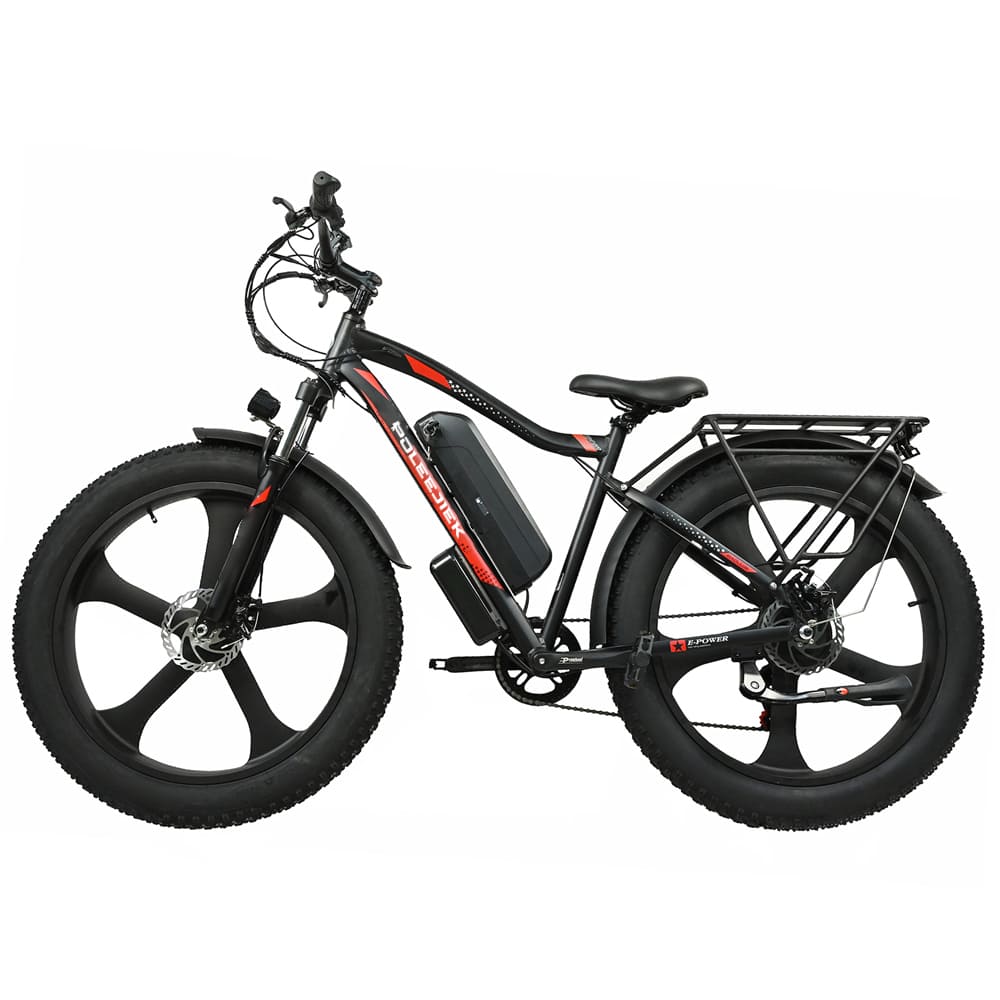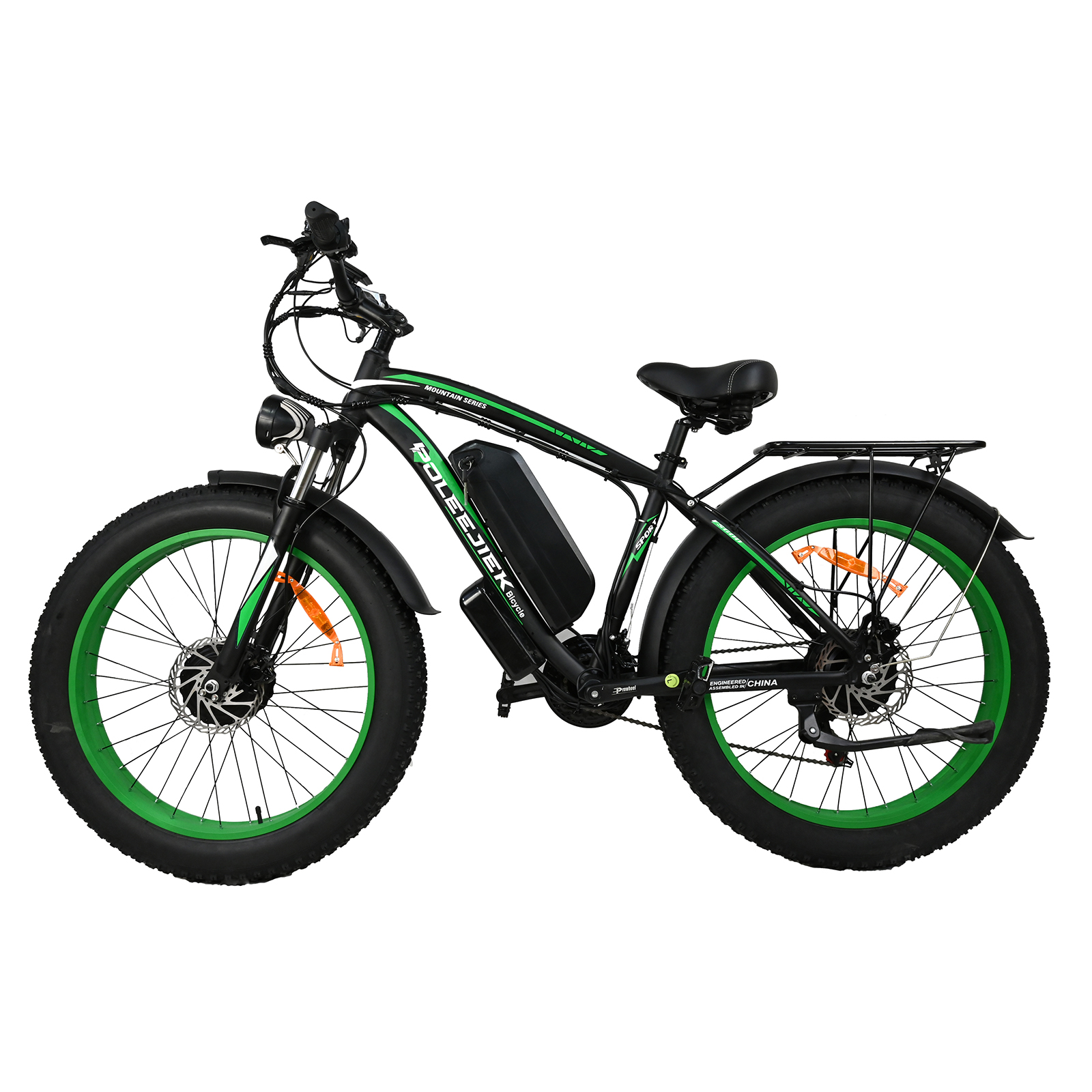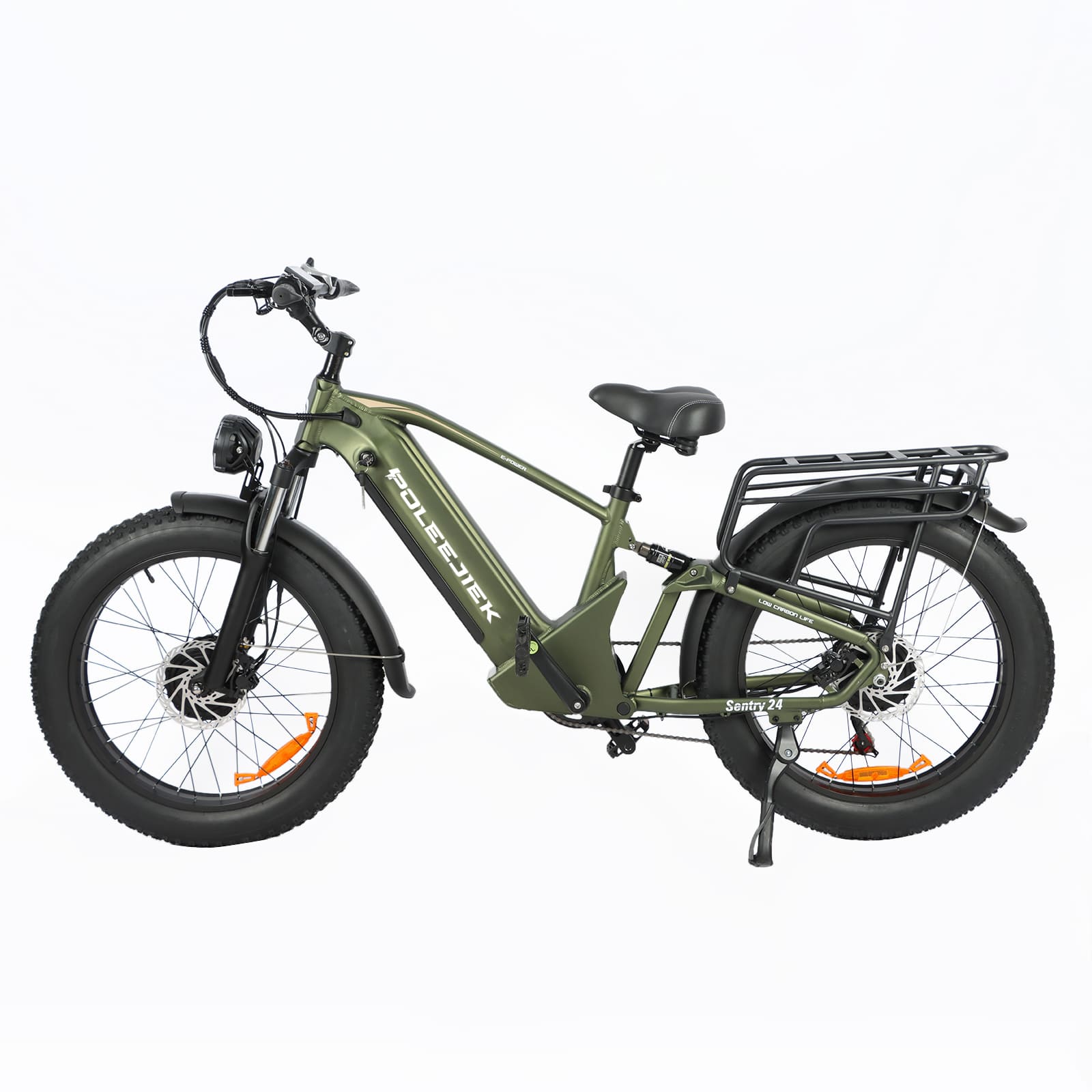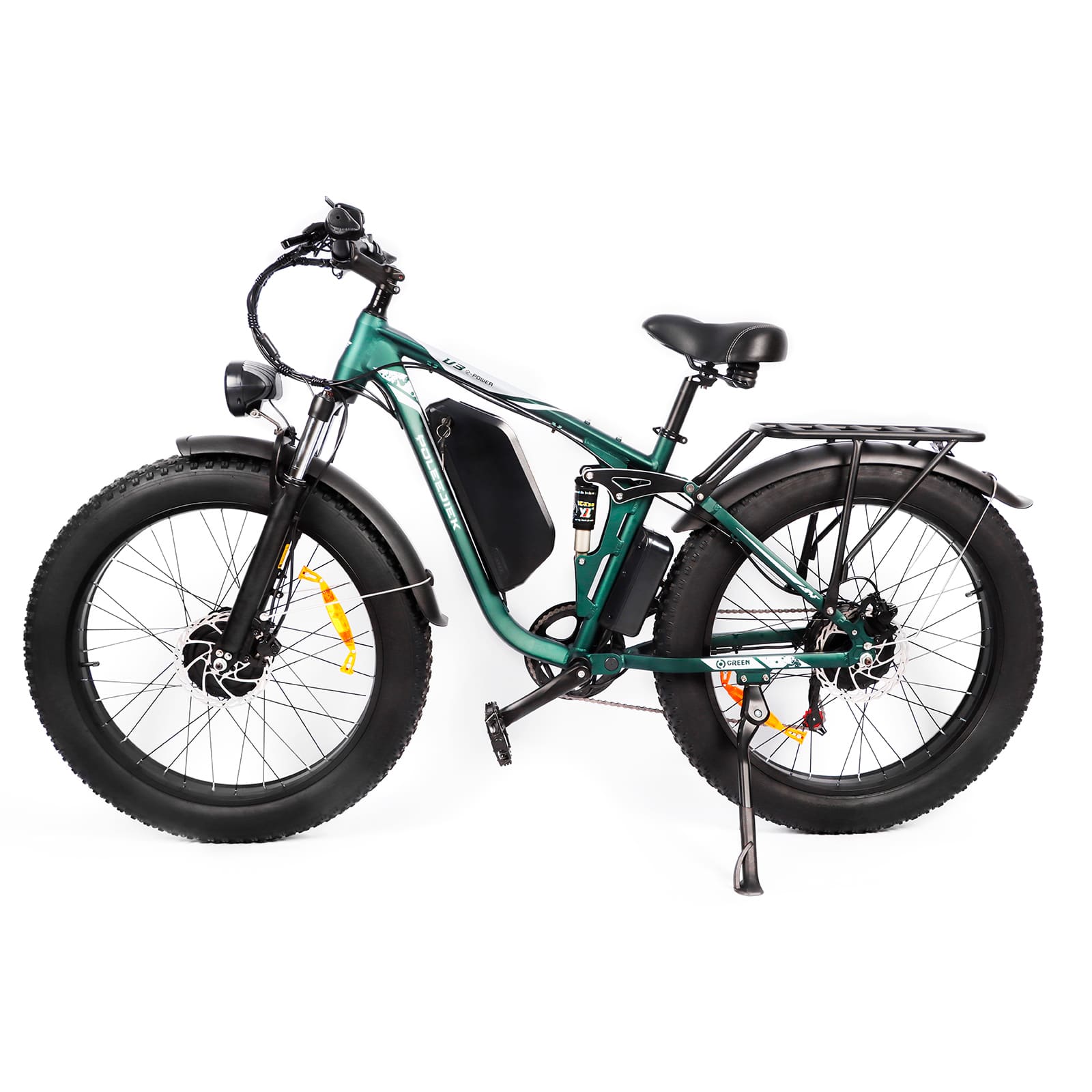48V vs. 72V Ebike Batteries: The Ultimate B2B Guide to Inventory, Compliance, and Performance
In the rapidly evolving landscape of electric mobility, the "Voltage War" is a conversation every B2B product manager and distributor is having. B2C customers are increasingly demanding higher performance; they want faster acceleration, steeper hill-climbing abilities, and higher top speeds. They are searching for the thrill of a 72V ebike.
However, for B2B dealers and OEM integrators, blindly chasing high voltage is a dangerous game. While high voltage unlocks performance, it introduces significant challenges regarding inventory management, ebike battery safety, and strict regulatory hurdles.
At Poleejiek, we understand that your business relies on balancing market demand with liability management. This guide analyzes the ebike battery 48V standard against high-performance 72V systems, helping you decide which architecture fits your business model and how to ensure safety regardless of the voltage you choose.
The Core Dilemma: Speed vs. Stability
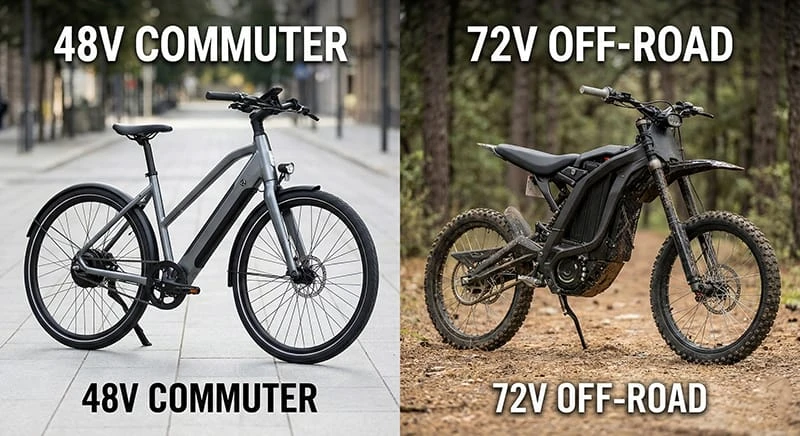
For B2B distributors, the tension lies between two distinct market desires:
- The Mass Market: Wants reliable, legal, and affordable transportation (typically 48V).
- The Enthusiast Market: Wants raw power, often searching for a 50 mph electric bike for sale or an electric dirt bike (typically 72V).
Stocking the wrong voltage infrastructure can lead to stagnant inventory or, worse, products that are seized by customs for non-compliance with ebike regulations.
48V Systems (Ebike Battery 48V): The B2B "Gold Standard"
Despite the hype surrounding high-voltage systems, the 48V architecture remains the backbone of the global e-mobility industry. For 80% of B2B dealers, this is the safest and most profitable inventory staple.
Why 48V is Mainstream
The 48V system strikes the perfect equilibrium between cost, range, and usable power. It is the standard voltage for the majority of batteries for electric bikes because it easily supports a 750 watt electric bike motor—the legal limit in many North American jurisdictions for Class 2 and Class 3 ebikes.
With a 48V system (typically 13S configurations), a rider can comfortably achieve 20 mph (32 km/h) to 28 mph (45 km/h). This covers the vast majority of commuter and recreational use cases.
The B2B Strategic Advantages
- Global Regulatory Compliance: The 48V system is universally accepted. In the EU (under EN 15194) and the US (CPSC definitions), 48V systems fit neatly into legal bicycle classifications. Importing and distributing these units requires less complex certification paperwork than high-voltage alternatives, which may be classified as motor vehicles.
- Supply Chain & Aftermarket Stability: Because ebike battery 48V packs are ubiquitous, finding replacement parts, chargers, and controllers is seamless. For a distributor, this lowers the burden of after-sales support. You are not relying on proprietary, niche components that may go obsolete in six months.
- Cost-Efficiency & ROI: Compared to a 72V system, a 48V system is approximately 30% cheaper to manufacture due to fewer cells in series and less robust BMS (Battery Management System) requirements. This allows for a more competitive MSRP and a healthier profit margin for dealers targeting the volume market.
Poleejiek Insight: Explore our 48V Commuter Series OEM Solutions
72V Systems (72V Ebike): The High-Performance Double-Edged Sword
If 48V is the sedan of the ebike world, the 72V ebike is the supercar. It is a necessary category for dealers targeting the off-road, hunting, and sport demographics, but it requires a sophisticated approach to sales and safety.
The Performance Allure
72V systems (20S configurations) are built for electric bike speed. Higher voltage allows the motor to spin faster for a given winding, enabling speeds exceeding 45-50 mph. Furthermore, high voltage allows for high power output (watts) with lower current (amps), which can improve efficiency at high speeds.
If your customer base consists of adrenaline seekers looking for an electric dirt bike, you simply cannot compete without a 72V option in your showroom.
The B2B Risks (Pain Point #2)
However, entering the 72V market brings specific B2B challenges that must be managed:
- Thermal Management & Safety: High voltage means high energy density. If a manufacturer uses cheap cells or an inferior BMS in a 72V pack, the risk of thermal runaway increases exponentially. A single fire incident can destroy a dealer's reputation and lead to massive liability claims.
-
The Legal Gray Zone: In almost all public jurisdictions, a 72V ebike is technically a moped or motorcycle. They usually exceed the definition of a "bicycle."
- Dealer Responsibility: You must explicitly label these products as "Off-Road Only" or "Private Land Use Only."
- Insurance: Standard bicycle insurance usually voids coverage for vehicles operating at these voltages/speeds.
Technical Deep Dive: Voltage Sag and Efficiency
For the technical product managers reading this, the choice between 48V and 72V also comes down to system efficiency under load.
When a 48V battery is under heavy load (e.g., climbing a steep hill), the voltage "sags." To maintain 1000W of power, the controller must draw more current (Amps).

As voltage drops, current must rise. High current generates heat (I²R losses) in the wiring and controller.
The 72V Advantage: Because the starting voltage is higher, the system draws significantly less current to achieve the same 1000W output. This runs the system cooler during hill climbs and acceleration. This is why Poleejiek recommends 72V specifically for heavy-duty cargo and hunting applications, not just for speed.
Poleejiek’s Commitment to Battery Safety: 48V or 72V
Whether you are sourcing ebike battery 48V packs for commuters or high-powered 72V packs for enthusiasts, the primary concern for any B2B buyer must be ebike battery safety.
Cheap batteries are the number one cause of warranty claims and safety recalls in the industry. At Poleejiek, we mitigate this risk through a three-pillar safety protocol.
1. Tier-1 Cell Sourcing
We strictly utilize A-Grade automotive cells from Samsung, LG, or Panasonic. We have a zero-tolerance policy for "re-wrapped" or recycled cells often found in budget OEM supply chains. Consistent internal resistance across cells ensures the pack stays balanced over years of use.
2. Intelligent BMS (Battery Management System)

Our Poleejiek battery technology includes proprietary BMS logic.
- For 72V Systems: We implement dual-temperature sensors and redundant short-circuit protection. The BMS actively monitors the voltage delta between cell groups. If a deviation is detected, the battery shuts down safely before heat generation occurs.
3. Certification and UL 2271
With the increasing crackdown on lithium-ion batteries in New York and potentially the EU, UL 2271 certification is becoming the "ticket to entry" for premium markets. Poleejiek is actively transitioning our entire OEM catalog to meet these rigorous standards, ensuring your inventory remains compliant with future regulations.
Poleejiek Insight: Read about our OEM Quality Control Process
Conclusion: Choosing the Right Voltage for Your Business
As a B2B partner, your choice of voltage defines your business model.
Choose 48V Inventory If:
- Your primary market is urban commuters, delivery fleets, or casual recreational riders.
- You prioritize rapid inventory turnover and broad regulatory compliance.
- You want to minimize legal liability regarding speed limits.
Choose 72V Inventory If:
- You cater to the off-road, hunting, or powersports demographics.
- You are competing against gas-powered dirt bikes.
- You have a service team capable of explaining the nuances of high-voltage charging and maintenance to end-users.
The Poleejiek Promise
Don't let the fear of technical complexity or safety risks stall your business growth. Whether you need the stability of 48V or the raw power of 72V, Poleejiek provides the engineering backing to keep your brand safe and profitable.
Ready to Secure Your Supply Chain?
Don't let inferior batteries burn down your business.
Download the Poleejiek B2B Battery Safety Specification Sheet today. Discover how our UL-standard protocols and smart BMS technology are redefining safety for both 48V and 72V architectures.



